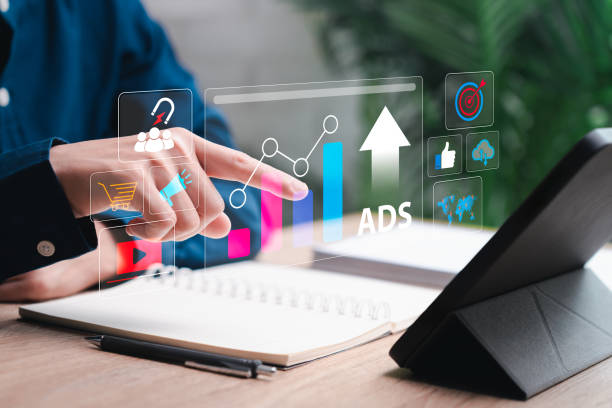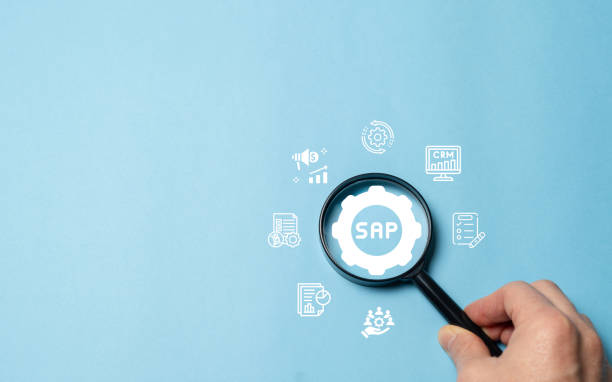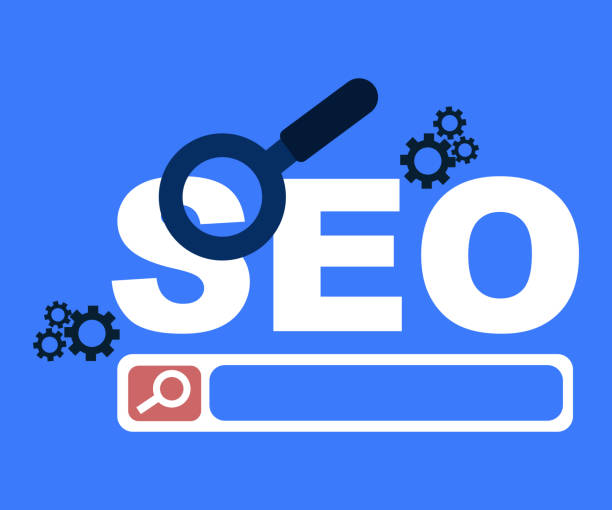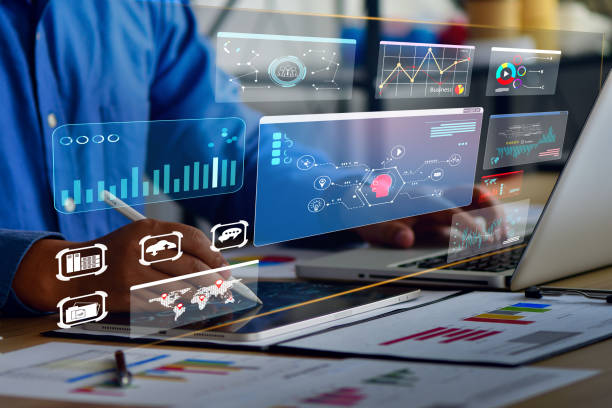What is On-Page SEO and Why Does It Matter?

On-page SEO, also known as #On_Page_SEO, refers to the set of actions taken within your website to improve the site’s ranking in search engines like Google.
These actions include optimizing content, HTML tags, site structure, and more.
The importance of on-page SEO lies in helping search engines better understand your site’s content and display it to relevant users.
If your site is well optimized for on-page SEO, it is more likely to rank higher in search results and attract more organic traffic.
In fact, on-page SEO is one of the two main pillars of SEO.
The other pillar is Off-Page SEO, which includes activities such as link building and advertising.
But without strong on-page SEO, your off-page SEO efforts will not be as effective.
Because search engines first look at the content inside your site to understand what your site is about and whether it is worth showing to users.
Given the intense competition in the online world, on-page SEO is essential for any business that wants to be seen on the internet.
By optimizing your site’s on-page SEO, you can improve your ranking in search engines, attract more traffic, and ultimately increase your sales.
On-page SEO is a long-term investment that will bring lasting and valuable results.
By following on-page SEO principles, you can ensure that your site is always visible to your target audience and create new opportunities for growth and development of your business.
How much does losing business leads due to an unprofessional site cost you? Solve this problem forever with a professional corporate website design by Rasaweb!
✅ Increase the credibility and trust of potential customers
✅ Attract new business leads more easily
⚡ Get a free consultation now!
Keyword Research – The First Step in On-Page SEO

Keyword Research is the first and most important step in on-page SEO.
In this step, you need to identify the words and phrases that your target audience uses to search for your products and services in search engines.
These keywords should be relevant to your site’s content and have a decent search volume.
To do keyword research, you can use various tools such as Ahrefs, SEMrush and Google Keyword Planner.
After identifying the keywords, you should use them strategically in your site’s content.
This does not mean filling the content with keywords, but rather using them naturally and in the right places.
Keywords should be used in page titles, meta descriptions, heading tags (H1-H6), body text, and images.
Also, you need to make sure that your content is valuable and useful to users.
Search engines are looking for content that answers users’ questions and solves their problems.
By conducting thorough keyword research and strategically using keywords in your site’s content, you can improve your site’s ranking in search engines and attract more traffic.
This ensures that your site’s on-page SEO is implemented correctly and brings desirable results.
Remember that keyword research is an ongoing process and you should regularly identify new keywords and add them to your site’s content.
Optimizing Page Titles and Meta Descriptions

The Title Tag and Meta Description are two important elements in on-page SEO that are displayed in search results.
The page title should be concise, engaging, and contain the page’s main keyword.
It should also encourage users to click on your site’s link.
The meta description should also be a summary of the page’s content and tell users what they will find by clicking on your link.
This element should also contain the page’s main keyword and encourage users to click.
Optimizing page titles and meta descriptions can have a big impact on your site’s click-through rate (CTR).
The higher the CTR, the better your site’s ranking in search engines will be.
To optimize these two elements, you should pay attention to the following:
* Page title should be a maximum of 60 characters.
* The meta description should be a maximum of 160 characters.
* The page title and meta description should contain the page’s main keyword.
* The page title and meta description should be engaging and persuasive.
* The page title and meta description should be relevant to the page’s content.
By following these tips, you can fully optimize your site’s page title and meta description and improve your site’s ranking in search engines.
Remember that on-page SEO is an ongoing process and you should regularly review and optimize the page title and meta description of your pages.
To better understand how to optimize page titles and meta descriptions, refer to the table below:
| Element | Description | Example |
|---|---|---|
| Page Title (Title Tag) | The title should be a summary of the page’s content and include the main keywords. | Buy Sports Shoes Online – Best Price | Sports Store |
| Meta Description | The meta description should be an engaging summary of the page’s content and encourage the user to click. | Find the best sports shoes at affordable prices in our sports store. Fast delivery throughout Iran. |
Optimizing Content for On-Page SEO

Content is king! You have heard this sentence many times, but the reality is that high-quality and optimized content is one of the most important factors in on-page SEO.
Your content should be valuable, relevant, readable, and engaging.
It should also answer users’ questions and solve their problems.
To optimize content for SEO, you should pay attention to the following:
* Using keywords naturally and in the right places.
* Writing long and comprehensive content (at least 300 words per page).
* Using heading tags (H1-H6) to organize content.
* Using images and videos to make the content more engaging.
* Internal linking to other pages of the site.
* External linking to reputable and relevant sites.
By following these tips, you can fully optimize your site’s content and improve your site’s ranking in search engines.
Remember that on-page SEO is an ongoing process and you should regularly review and optimize your site’s content.
You should also have a plan to update content and add new content.
This makes your site always attractive to search engines and attracts more traffic.
In summary, to optimize content for on-page SEO, you need to produce high-quality, relevant, readable, and engaging content that answers users’ questions and solves their problems.
You should also use keywords naturally, organize your content, use images and videos, and link to other pages of your site and reputable sites.
Does your current website reflect your brand’s credibility as it should? Or does it scare away potential customers?
Rasaweb, with years of experience in designing professional corporate websites, is your comprehensive solution.
✅ A modern, beautiful site tailored to your brand identity
✅ Significantly increase lead generation and new customers
⚡ Contact Rasaweb now for a free website design consultation!
Optimizing Images and Videos

Images and videos can make your site’s content more engaging and interactive.
However, if images and videos are not properly optimized, they can slow down your site and lower your site’s ranking in search engines.
To optimize images and videos for on-page SEO, you should pay attention to the following:
* Choosing the appropriate format for images (JPEG for images and PNG for logos).
* Reducing image size without losing quality.
* Using alt tags for images (a brief description of the image).
* Using the appropriate file name for images (containing keywords).
* Using videos on appropriate platforms (YouTube, Vimeo).
* Optimizing video titles and descriptions (containing keywords).
* Using heading tags (H1-H6) to organize video content.
By following these tips, you can fully optimize your site’s images and videos and improve your site’s speed and ranking in search engines.
Remember that on-page SEO is an ongoing process and you should regularly review and optimize your site’s images and videos.
In summary, to optimize images and videos for on-page SEO, you need to use the appropriate format, reduce image size, use alt tags for images, use the appropriate file name for images, use videos on appropriate platforms, and optimize video titles and descriptions.
Appropriate URL Structure for On-Page SEO

Your site’s URL structure plays an important role in on-page SEO.
URLs should be short, readable, and contain keywords.
You should also avoid using special characters and numbers in URLs.
To create a proper URL structure, you should pay attention to the following:
* Using keywords in the URL.
* Keeping the URL short.
* Using hyphens (-) instead of underscores (_).
* Using lowercase letters.
* Avoiding the use of special characters and numbers.
* Creating a hierarchical structure for URLs.
By following these tips, you can fully optimize your site’s URL structure and improve your site’s ranking in search engines.
Remember that on-page SEO is an ongoing process and you should regularly review and optimize your site’s URL structure.
An optimized URL structure helps search engines better understand your site’s structure and properly index your site’s content.
In addition, a readable URL structure helps users understand what each page of your site is about and easily navigate your site.
In summary, to create an appropriate URL structure for on-page SEO, you need to use keywords, keep URLs short, use hyphens instead of spaces, use lowercase letters, avoid special characters and numbers, and create a hierarchical structure for URLs.
Internal Linking – Strengthening Site Structure

Internal Linking means creating links between different pages of your site.
Internal linking can help search engines better understand your site’s structure and properly index your site’s content.
Also, internal linking can help users easily navigate your site and find the content they want.
For effective internal linking, you should pay attention to the following:
* Linking to related pages.
* Using appropriate anchor text (the text that the link points to).
* Linking to important pages of the site.
* Avoiding excessive linking.
* Linking to high-value pages.
By following these tips, you can fully optimize your site’s internal linking and improve your site’s ranking in search engines.
Remember that on-page SEO is an ongoing process and you should regularly review and optimize your site’s internal linking.
Internal linking helps search engines understand the value and importance of different pages of your site and determine your site’s ranking accordingly.
Also, internal linking helps users easily navigate your site and find the content they want, which can increase the time users spend on your site and reduce the bounce rate.
To better understand how to do internal linking, refer to the table below:
| Scenario | Source Page | Anchor Text | Destination Page |
|---|---|---|---|
| An article about SEO | “What is SEO?” page | On-Page SEO | “Comprehensive Guide to On-Page SEO” page |
| Introducing a product | “Introducing Product X” page | Buy Product X | “Product X Purchase Page” page |
Optimizing Site Speed

Site speed is one of the most important factors in on-page SEO and User Experience.
If your site is slow, users will leave your site and your site’s ranking in search engines will decrease.
To optimize site speed, you should pay attention to the following:
* Using appropriate hosting.
* Optimizing images and videos.
* Enabling Gzip compression.
* Using CDN (Content Delivery Network).
* Reducing the number of HTTP requests.
* Using Cache.
* Optimizing HTML, CSS, and JavaScript code.
By following these tips, you can fully optimize your site’s speed and improve your site’s ranking in search engines.
Remember that on-page SEO is an ongoing process and you should regularly review and optimize your site’s speed.
A fast site not only improves your site’s ranking in search engines, but also increases user satisfaction and increases conversion rate.
In summary, to optimize site speed for on-page SEO, you need to use appropriate hosting, optimize images and videos, enable Gzip compression, use CDN, reduce the number of HTTP requests, use cache, and optimize HTML, CSS, and JavaScript code.
Research shows that 80% of customers trust companies with professional websites more. Does your current site earn this trust?
With Rasaweb’s corporate website design services, solve the problem of customer distrust and weak online image forever!
✅ Create a professional image and increase customer confidence
✅ Attract more sales leads and grow your business
⚡ Get a free consultation
Site Being Mobile-Friendly

Given the increasing use of mobile devices, being Mobile-Friendly is one of the important factors in on-page SEO.
If your site is not Mobile-Friendly, mobile users will leave your site and your site’s ranking in search engines will decrease.
To make the site Mobile-Friendly, you should pay attention to the following:
* Using Responsive Design.
* Using readable fonts on mobile devices.
* Optimizing images and videos for mobile devices.
* Avoiding the use of Flash plugins.
* Using large and touchable buttons and links on mobile devices.
By following these tips, you can fully make your site Mobile-Friendly and improve your site’s ranking in search engines.
Remember that on-page SEO is an ongoing process and you should regularly review and optimize your site’s Mobile-Friendly status.
A Mobile-Friendly site not only improves your site’s ranking in search engines, but also increases mobile user satisfaction and increases conversion rate.
In summary, to make the site Mobile-Friendly for on-page SEO, you need to use responsive design, use readable fonts on mobile devices, optimize images and videos for mobile devices, avoid using Flash plugins, and use large and touchable buttons and links on mobile devices.
Fixing Site Errors and Improving User Experience

Fixing site errors and improving User Experience are two important factors in on-page SEO.
If your site has errors or does not have a good user experience, users will leave your site and your site’s ranking in search engines will decrease.
To fix site errors and improve user experience, you should pay attention to the following:
* Fixing 404 errors (page not found).
* Fixing redirect errors.
* Fixing index errors.
* Improving site speed.
* Improving the site’s Mobile-Friendly status.
* Improving site design.
* Improving site navigation.
* Improving site content.
By following these tips, you can fix your site’s errors and improve your site’s user experience.
Remember that on-page SEO is an ongoing process and you should regularly review and fix your site’s errors and improve your site’s user experience.
A site without errors and with a good user experience not only improves your site’s ranking in search engines, but also increases user satisfaction and increases conversion rate.
On-page SEO is a comprehensive process that requires constant attention and effort.
In summary, to fix site errors and improve user experience for on-page SEO, you need to fix 404, redirect, and index errors, improve site speed, improve the site’s Mobile-Friendly status, improve site design, improve site navigation, and improve site content.
Frequently Asked Questions
| Question | Answer |
|---|---|
| What is On-page SEO? | On-page SEO refers to the set of actions that are performed within your website to improve its ranking in search engine results. This includes optimizing content, site structure, and HTML code. |
| Why is on-page SEO important? | On-page SEO helps search engines understand the content of your page and determine whether your content is relevant to searchers. It is the foundation of any successful SEO strategy. |
| What are the key elements of on-page SEO? | Page title (Title Tag), meta description, use of keywords, image optimization, heading structure (H1, H2, …), internal linking, and content quality are key elements. |
| How to optimize page title (Title Tag)? | The page title should include the main keyword, be engaging and persuasive to click, and be between 50 and 60 characters (or suitable pixels) in length to be fully displayed in search results. |
| What role does the meta description play in on-page SEO? | The meta description is a summary of the page’s content that appears below the title in search results. Although it does not directly affect ranking, it helps SEO by increasing click-through rate (CTR). |
| What is the importance of using heading structure (H1, H2, H3) in on-page SEO? | Headings structure the content of the page and make it easier to read. H1 is usually the main title of the page and should include a keyword. H2 and H3 are used to organize sub-sections and help search engines understand the hierarchy of content. |
| How to use keywords effectively in content? | Keywords should be used naturally and logically throughout the content, including the introduction, body and conclusion. Avoid over-filling keywords (Keyword Stuffing). |
| What steps are involved in optimizing images for on-page SEO? | Includes compressing images to reduce size, using descriptive file names, adding appropriate Alt Text, and optimizing image title and description. Alt Text is critical for accessibility and helping search engines understand the content of the image. |
| What is internal linking and what are its benefits? | Internal linking means creating a link from one page on your website to another page on the same website. This helps users easily navigate your site, distributes page authority across the site, and helps search engines better understand your site’s structure. |
| What is the importance of content quality in on-page SEO? | High-quality, accurate, comprehensive, and valuable content for users is the cornerstone of on-page SEO. Search engines prefer content that meets the needs of users. Quality content leads to more user time on the site (Dwell Time) and reduced bounce rate, which are positive SEO signals. |
And other services of Rasa Web Advertising Agency in the field of advertising
Intelligent Content Strategy: A new service to increase website traffic by intelligently analyzing data.
Intelligent Marketing Automation: A combination of creativity and technology to attract customers by optimizing key pages.
Intelligent Customer Journey Map: An exclusive service for increasing sales based on precise audience targeting.
Intelligent Google Ads: Transform your website traffic with the help of Google Ads management.
Intelligent Digital Branding: An exclusive service for growing user engagement based on precise audience targeting.
And more than hundreds of other services in the field of internet advertising, advertising consulting and organizational solutions
Internet Advertising | Advertising Strategy | Advertorial Reporting
Resources
What is SEO?
,What is SEO and why is it important?
,What is SEO?
,What is SEO?
? Rasaweb Afarin Digital Marketing Agency specializes in promoting your business in the online space. From fast website design and professional to SEO optimization and advertising campaign management, we pave the way for your digital success.
📍 Tehran, Mirdamad Street, next to the Central Bank, South Kazerun Alley, Ramin Alley No. 6


